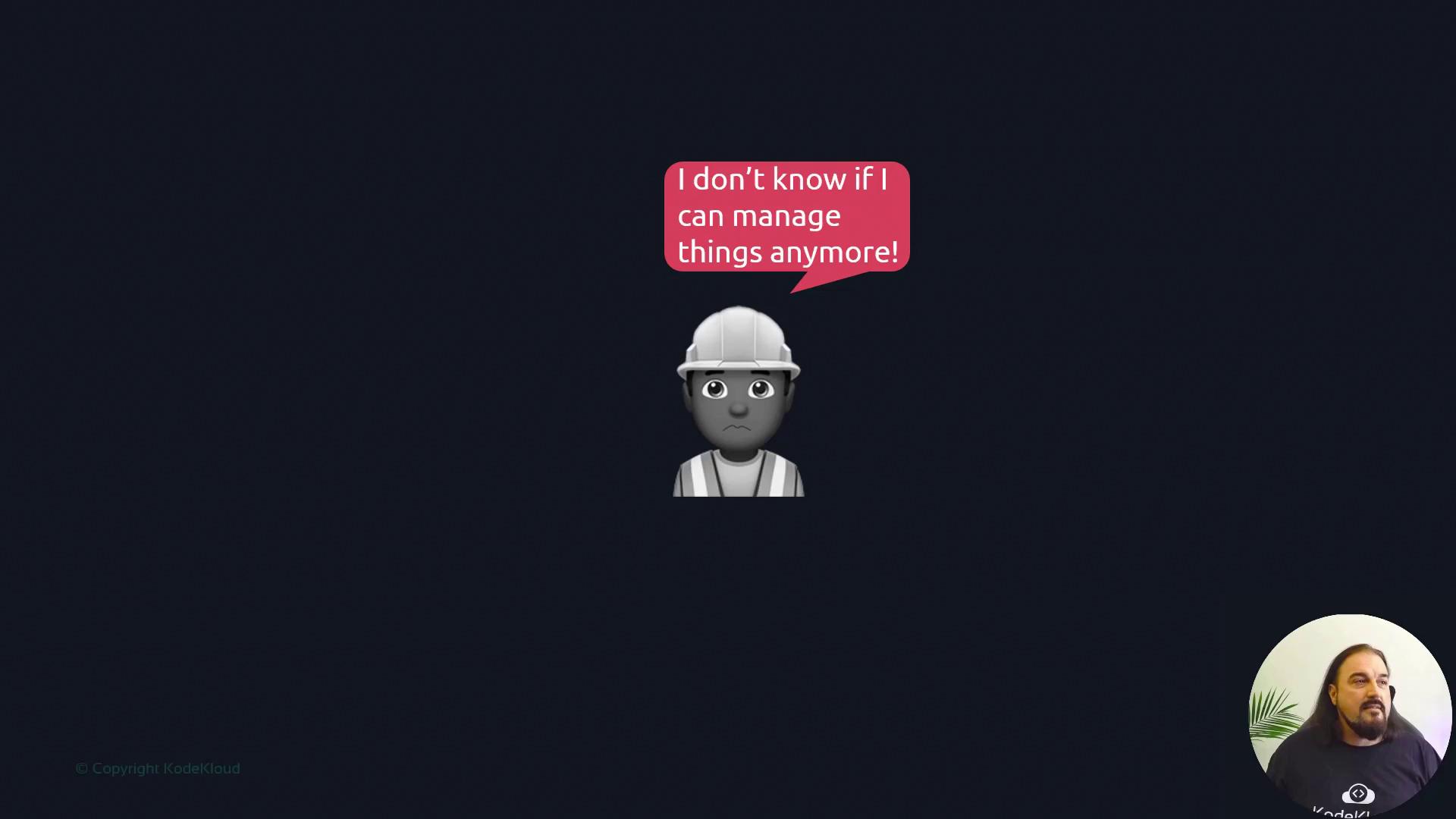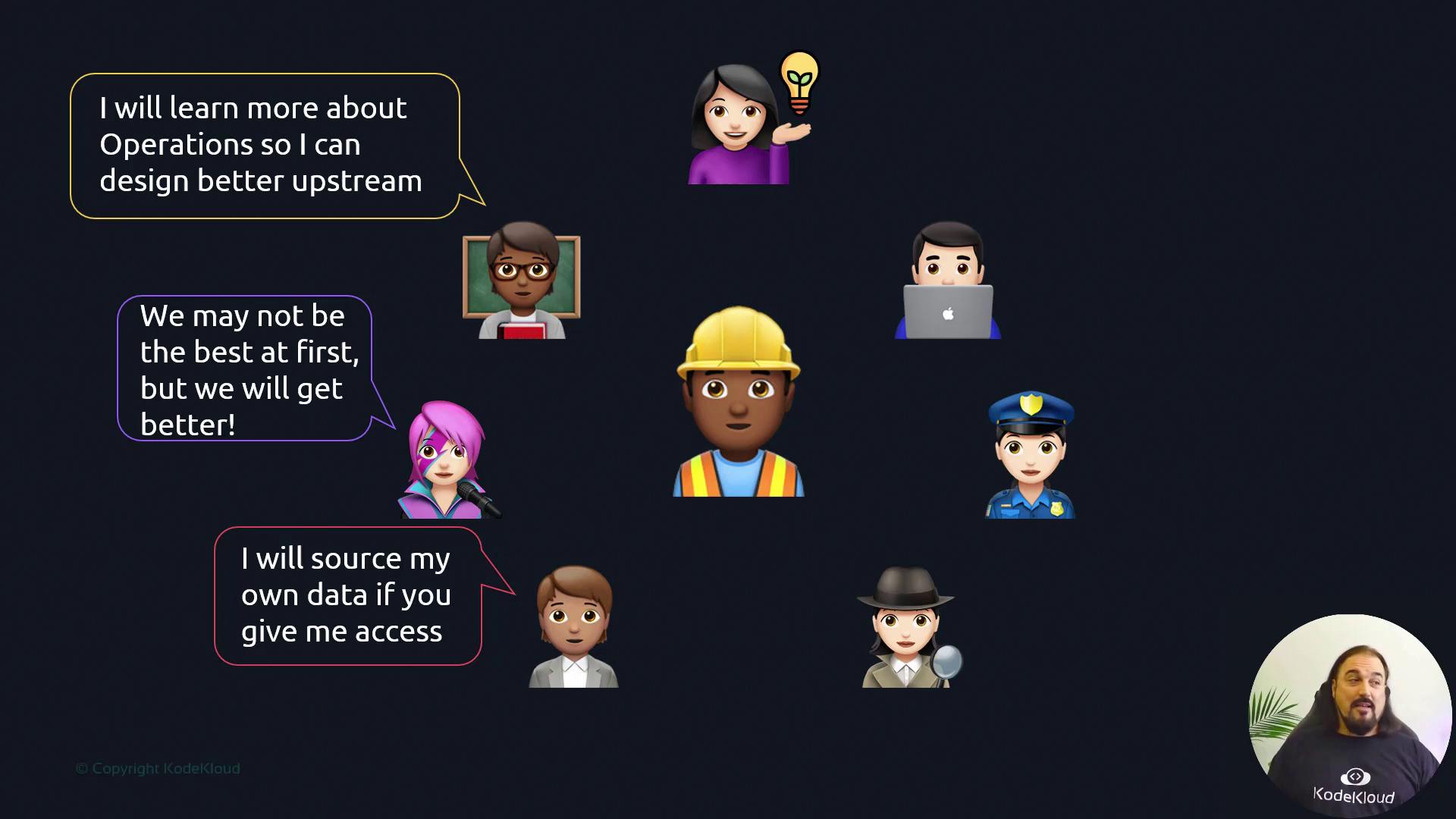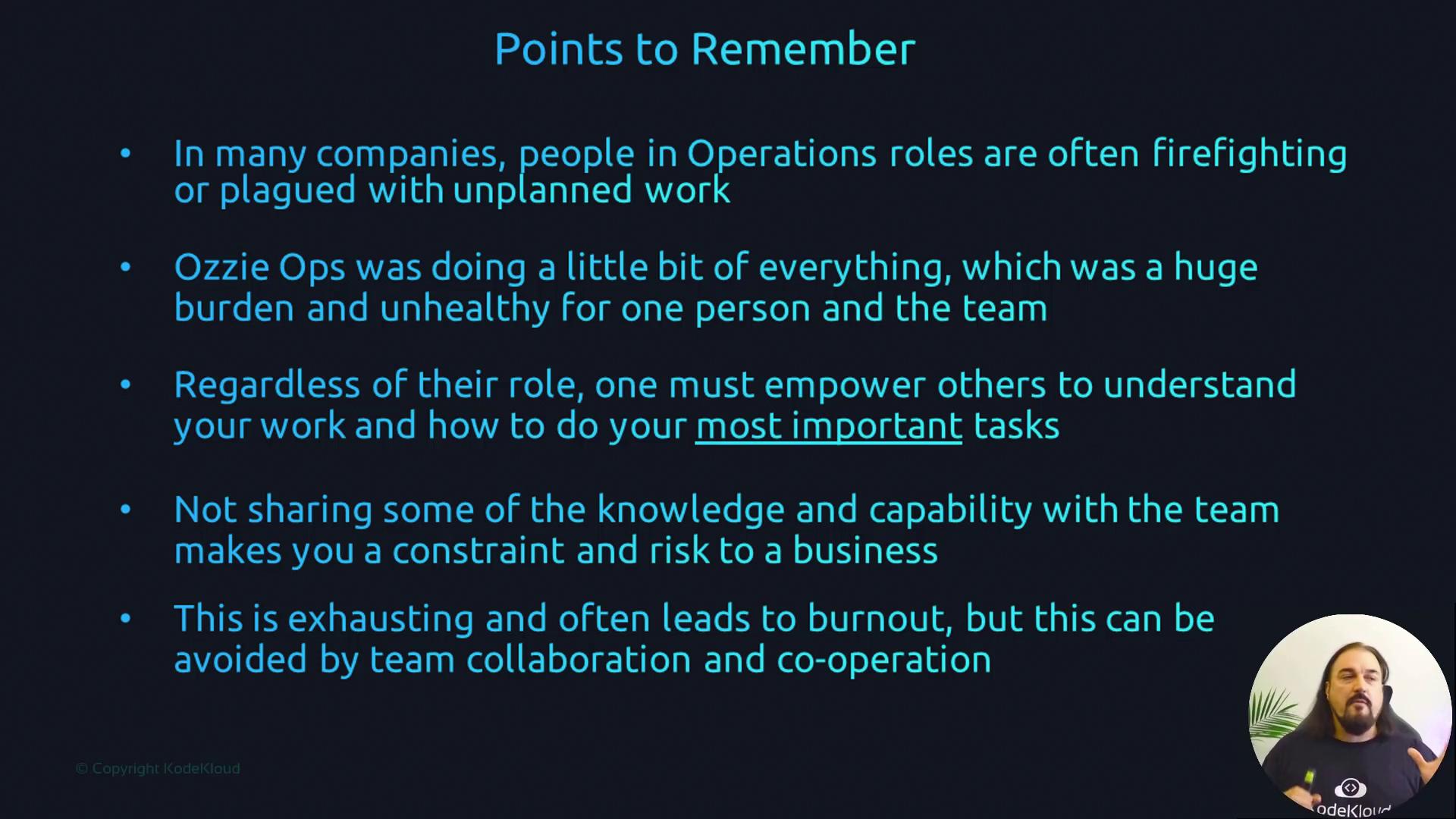Fundamentals of DevOps
People
An Operations Scenario
Welcome back to our DevOps series, where we dive into operational challenges and explore how embracing change can lead to more resilient teams and improved workflows.
In this lesson, we discuss a real-world scenario featuring Ozzy Ops, a team member once celebrated as a DevOps superhero. Ozzy excelled in coding, testing, securing, planning, designing, and operating—all on his own. For a full year, his dedication was unquestioned. However, the immense pressure eventually took its toll.
The Breaking Point
Ozzy managed everything single-handedly until one day, he fell seriously ill and was unable to work. While his supportive colleagues stepped in, they soon realized that critical knowledge about pipeline support, patching, and automation was exclusive to Ozzy. As his absences grew and customer concerns mounted, the team's dependence on his expertise became a major bottleneck.

A Moment of Reflection and Change
During his recovery, Ozzy turned to learning—watching YouTube videos and questioning the conventional mindset. He began to wonder: What if success wasn’t solely about individual capability? With fresh insights from DevOps principles, Ozzy realized the value of team collaboration and shared responsibilities.

Determined to foster a more sustainable work environment, Ozzy initiated training sessions for his colleagues, transferring critical knowledge and skills. His objective was clear: if similar challenges arose in the future, the team could collectively handle between 50% to 75% of the workload.
Key Insight
Empowering your team through shared responsibilities and continuous learning is essential to prevent burnout and dependency on a single individual.
Building a Collaborative Culture
The response to Ozzy's initiative was overwhelmingly positive:
- Developers eagerly pitched in to resolve production bugs.
- Security Team members volunteered to assist with automation tasks.
- QA Team showed readiness to help with establishing production tests.
Despite initial concerns that others might not perform tasks as meticulously as Ozzy, the team committed to learning and improving over time. Their determination to grow and support each other gradually transformed the work culture.

This shift in dynamics led to a supportive atmosphere where responsibilities were shared, processes were refined, and trust was built. Ozzy experienced a significant reduction in stress and burnout, while the team evolved into a cohesive and resilient unit.
Key Takeaways
| Key Aspect | Description |
|---|---|
| Over-reliance on Individuals | Depending solely on one person for critical operations is unsustainable. |
| Importance of Knowledge Sharing | Distributing expertise across the team reduces risks and improves operational efficiency. |
| Empowerment Through Training | Offering training on essential tasks, like CI/CD pipelines and platform engineering, fosters team capability. |
| Collaborative Team Dynamics | A culture of shared responsibilities not only prevents burnout but also drives continuous improvement. |

By fostering a culture of shared knowledge and collaboration, organizations can build robust, resilient software delivery systems that mitigate risk and ensure smoother operations.
Final Thought
Avoid putting all your eggs in one basket. Empower your team with the skills and knowledge they need to succeed together.
Thank you for reading.
I'm Michael Forrester. See you in the next lesson.
Watch Video
Watch video content